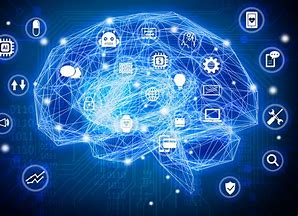Artificial Intelligence (AI) and Machine Learning (ML) are two closely related fields that have gained significant attention in recent years. Both AI and ML are concerned with developing systems that can perform tasks that typically require human intelligence. However, they differ in their approaches and applications.
AI refers to the broader concept of creating intelligent machines that can mimic or simulate human intelligence. It encompasses various subfields, including ML. AI focuses on developing systems that can reason, learn, and make decisions in a way that imitates human cognition. It aims to create machines that can understand and interpret data, solve problems, and interact with humans in a natural and intelligent manner.
On the other hand, ML is a subset of AI that focuses on designing algorithms and models that enable machines to learn from data and improve their performance without being explicitly programmed. ML algorithms use statistical techniques to automatically identify patterns, make predictions, or take actions based on input data. They learn iteratively by adjusting their internal parameters and optimizing their performance over time.
Data plays a crucial role in unlocking the value of AI and ML. The success of AI and ML models heavily relies on the quality, quantity, and diversity of data they are trained on. Data is used to train models, validate their performance, and make predictions or decisions. The more diverse and representative the data is, the better the model's ability to generalize and perform accurately on new, unseen data.
To unlock the value of data, several steps are involved:
- Data Collection: Relevant and comprehensive data must be collected from various sources. This can include structured data (e.g., databases) and unstructured data (e.g., text, images, videos).
- Data Preprocessing: Raw data often requires preprocessing to clean, normalize, and transform it into a suitable format for analysis. This step involves handling missing values, removing outliers, and encoding categorical variables, among other tasks.
- Feature Engineering: Feature engineering involves selecting and extracting the most relevant features from the data that can contribute to the learning process. It requires domain expertise and an understanding of the problem at hand.
- Model Training: In this step, ML algorithms are applied to the preprocessed data to train models. The models learn from the input data and adjust their internal parameters to minimize errors or maximize performance on a specific task.
- Model Evaluation: Trained models need to be evaluated using appropriate metrics to assess their performance and generalization capabilities. This step helps identify any issues or areas for improvement.
- Model Deployment: Once a model has been trained and validated, it can be deployed to make predictions or decisions on new, unseen data. This can involve integrating the model into a larger software system or creating an application that interacts with users.
- Continuous Learning and Improvement: AI and ML models can benefit from continuous learning and improvement. As new data becomes available, models can be retrained or updated to adapt to changing conditions and improve their performance over time.
- It's important to note that AI and ML also raise ethical considerations, such as data privacy, bias, and transparency. Responsible AI practices involve ensuring fairness, transparency, and accountability in the development and deployment of AI and ML systems.
In conclusion, AI and ML have the potential to unlock the value of data by enabling machines to learn, reason, and make intelligent decisions. However, harnessing this potential requires careful consideration of data collection, preprocessing, model training, evaluation, and deployment, along with addressing ethical implications.






